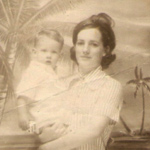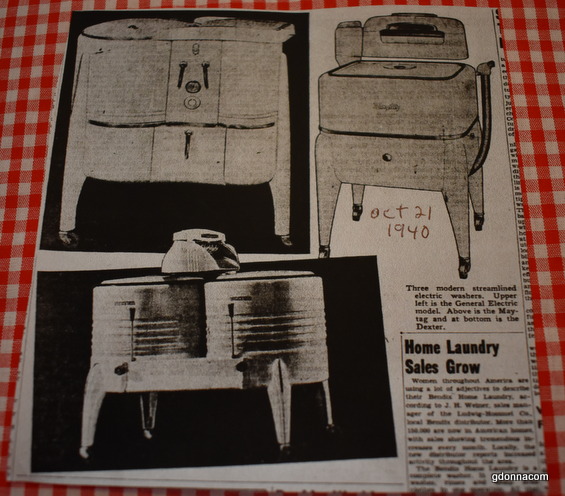
One thing that was the same in the past and now is there was laundry to wash and dry.
There were different ways to wash laundry, today we have these HE machines that are suppose to save water and do a good job of cleaning the laundry but it does not.
When I first married I did not have a washer and hand washed the laundry then a few years later we moved to a house that had a round wringer washer. I just loved that washer! It reminded me of my Grandmother's washer and I was happy.
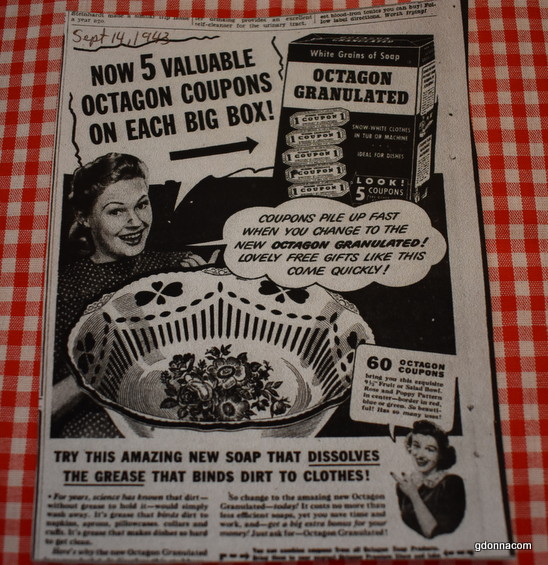
Soap was different in the past. Today much of our soap is synthetic and I do not care for the scents that are put in the laundry soap today.
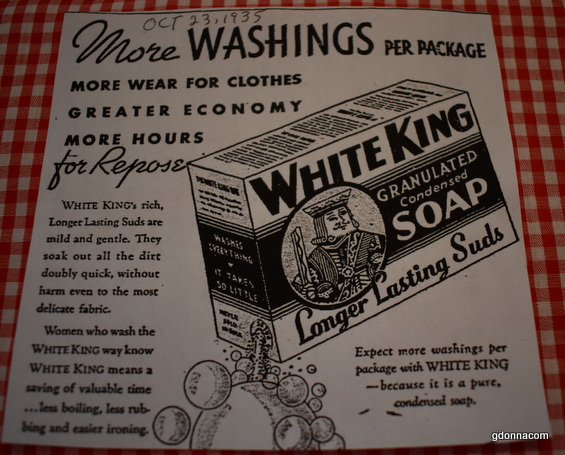
In the past the soap was mostly lye and castile. I call that real soap. It came in different forms, flaked, granulated, grated, bar and so on.

Today we can buy real soap such as Dr. Bronners, Kirks castile soap and other handmade soaps and we can also grate laundry bar soap or dr bronners, kirks etc and mix in some washing soda and borax and make our own old fashioned recipe. Some people are not sure of borax and if there is an ingredient you don't want then just leave it out.

If you want to hand wash your fine, delicate items you can use a bar of dr bronners, a goat milk laundry bar, kirks bar or you can use a special rose soap or something you enjoy using. We can wash our clothes with a bar of soap and there is not going to be a soap police to arrive.
We are so far removed from the pre synthetic era that many people don't realize that if all you have is a bar of soap then use it to wash your body, your laundry and your dishes. You can clean your house, mop your floors. If it is real soap.
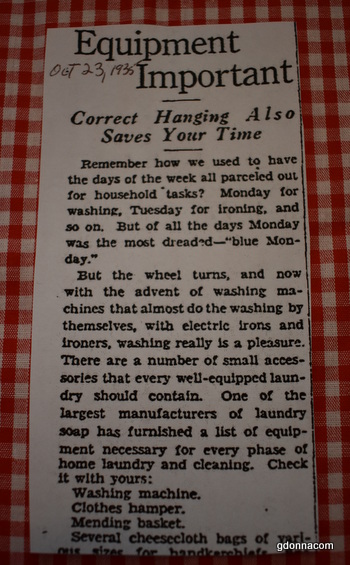
Here is an article from 1935 about laundry and equipment. I hope you can read this, I can on my computer.
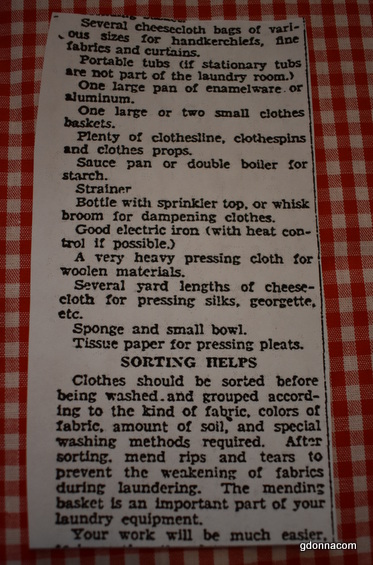
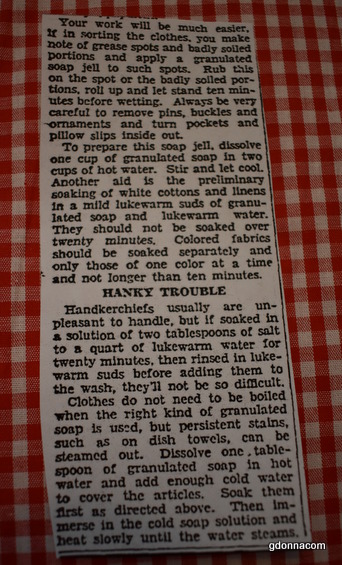
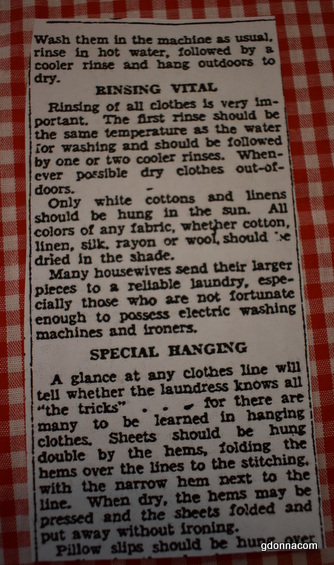

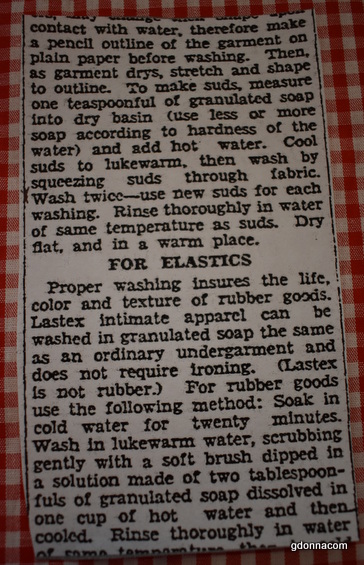


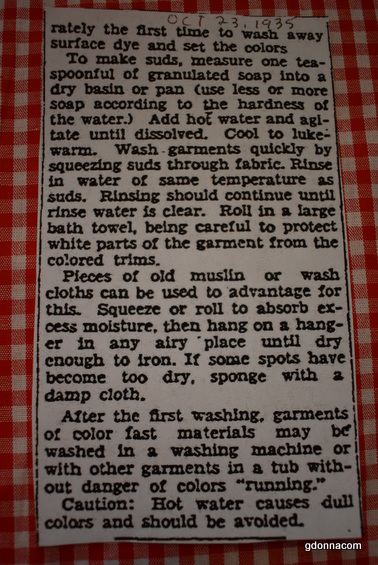
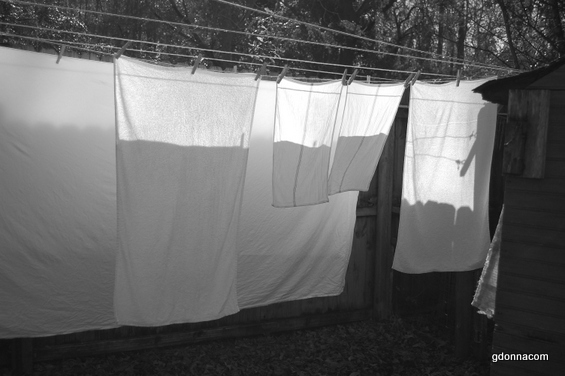
When we get our home in order, rid ourselves of clutter and too many clothes then laundry becomes not as overwhelming.

If you have never used or seen the old wringer washers you might not know that it does not spin. You wash first, wring, rinse, wring. So what this machine does is the heavy work of swishing.
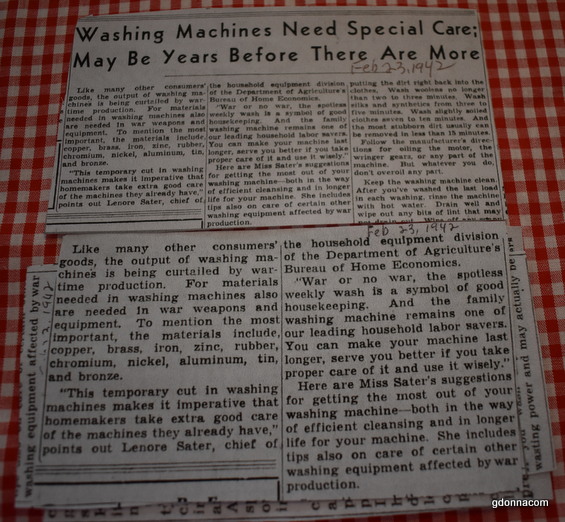
This is an article from 1942, ww2 was going on and the realization that many goods would become unavailable as the US was getting involved in the war.
I have typed out this article and it is a bit long but has some interesting information especially if you happen to be one of the lucky ones to have an old wringer washer or if you are looking for an old wringer washer or if you have a wringer.
Feb 23, 1942
Like many other consumers goods, the output of washing machines is being curtailed by wartime production. For materials needed in washing machines also are needed in war weapons and equipment. To mention the most important, the materials include copper, brass, iron, zinc, rubber, chromium, nickel, aluminum tin and bronze.
This temporary cut in washing machines makes it imperative that homemakers take extra good care of the machines they already have points out Lenore Sater, chief of the household equipment division of the Department of Agriculture's Bureau of Home Economics.
War or no war, the spotless weekly wash is a symbol of good housekeeping. And the family washing machine remains one of our leading household labor savers. You can make your machine last longer, serve you better if you take proper care of it and use it wisely.
Here are miss Sater's suggestions for getting the most out of your washing machine both in the way of efficient cleansing and in longer life for your machine. She includes tips also on care of certain other washing equipment affected by war production.
Save time, clothes, power and your machine by washing clothes the right way. First of all, read the directions that came with the machine. These directions should tell you any special points that you may need to watch about the use of your particular washer.
Note the water line, it was put there by the manufacturer for a good reason. The water line shows the amount of water you need for most efficient washing. If you put in more water than this, you're wasting water and you'll get a lot of unnecessary splashing. That extra splashing may mean extra work on your part to wipe up the floor afterward.
Watch the temperature of the wash water, you can wash clothes most quickly and easily and get the best washing results if you suit the temperature of the water to the kind of clothes you are washing. For white clothes, have water so hot you can't hold your hand in it. For colored clothes, have water that's comfortably warm to the touch. For silks, synthetics, and woolens, use lukewarm water, water that feels neither hot nor cold to touch.
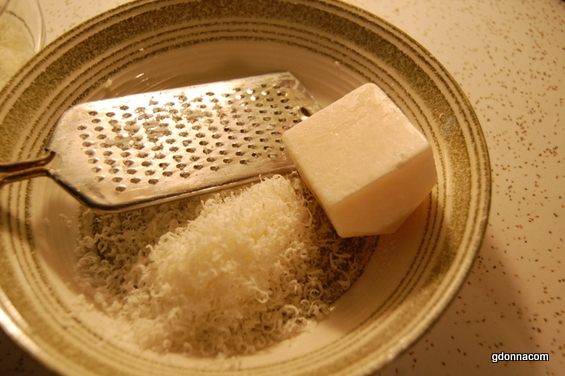
Soap, use a mild, pure soap in form of flakes, granules, beads, chips, or bar soap grated or shaved. Start the machine when you add the soap in order to dissolve the soap quickly, and use enough soap to get about two inches of suds.
Don't overload the machine, it's hard on the motor of electric machines and taxes the energy of the operator of a hand machine to put too many clothes in the tub at once. Overloading also makes it impossible to get good washing results. For the moderate sized washing machine, six to eight pounds is a safe average load. A sample six pound load might be two large sheets, four shirts, and two bath towels.
Never put in more clothes than will circulate easily.
Start motor before you add clothes, if you have an electric machine, starting the motor after the washer is loaded may throw too heavy a load on the motor you may blow out a fuse. However if your electric machine is the type that has a separate cylinder for the clothes, you'll have no trouble on this score.
Watch the time, wash the clothes just long enough to get the dirt out. If you wash any longer, you're wasting power and may actually be putting dirt right back into the clothes. Wash woolens no longer than two to three minutes. Wash silks and synthetics from three to five minutes. Wash slightly soiled clothes seven to ten minutes. Ant the most stubborn dirt usually can be removed in less than 15 minutes.
Follow the manufacturer's directions for oiling the motor, the wringer gears, or any part of the machine. But whatever you do, don't over oil any part.
Keep the washing machine clean. After you've washed the last load in each washing, rinse the machine with hot water. Drain well and wipe out any bits of lint that may not drain out. Wipe off any soapy marks with a damp cloth. Dry inside and out. If any of the inside parts of the machine cylinders, agitators, vibrators are made so they detach easily, take these out and dry them.
To keep the outside frame of a machine from rusting if it's of steel or iron rub it once in awhile with a little oil.
Between washdays, leave the drain faucet open and prop the lid up and inch or two so air can circulate. If you have to keep the machine out where its likely to get dusty, put some sort of a cover over it. Never use harsh scouring powders on any part of the machine especially not on the inside. If you have stubborn spots, use fine scouring powder. If that doesn't work hot vinegar will remove the stain in some cases. Copper tubs often get a greenish compound on them called verdigris. This comes off with a paste made of soapsuds and household amonia.
Now that rubber is scarce, be especially careful with the rubber rolls of your wringer. Before you use the wringer each washday, be sure pressure on the rolls is evenly distributed. In some wringers, this adjustment is made automatically, but in others you have to adjust it with hand screws.
Be sure you don't stall or strain the wringer rolls by putting too much clothing through them at one time. Fold buttons and buckles to the inside of clothes before they go through the wringer. And every time you finish a washing release the pressure on the wringer rolls. Hot rubber rolls under pressure sometimes stick to each other on cooling, then when you separate the rolls, the rubber may be damaged.
Wipe the rubber rolls clean and dry after you use them. You can take most discoloration off with a cloth dampened with kerosene. But get every trace of kerosene off with soapy water, rinsing, and drying. Kerosene left on rubber will soften it. Cover the wringer when you're not using it.
If your machine has a spinner type of dryer, always pack the clothes in it evenly. Uneven packing causes the basket to vibrate and that??™s hard on the machine. After each washing, take out the spinner basket and dry it thoroughly as well as the compartment in which it fits.
Damp floors, wet hands, wet clothes all spell danger when you are handling electrical cords and plugs. Check all cords and plugs periodically on electric machines. If they get worn, replace them or have them repaired. Keep cords dusted and put them away coiled up loosely not wrapped tightly or coiled around any sharp metal pieces.
Dry your hands before you handle cords or plugs. Some homemakers like to wear rubbers as an extra precaution in damp basements. End of Article
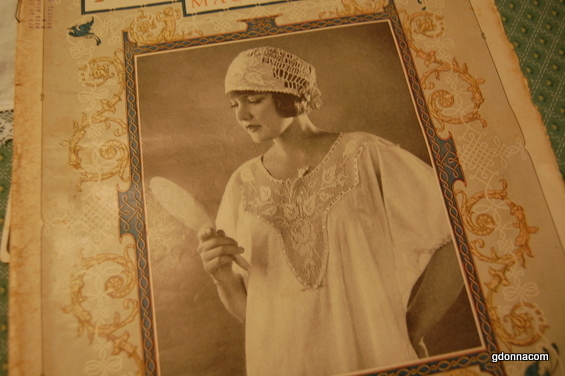
In the past many of the garments were hand made and fine lace was inserted to make beautiful night clothes as well as day wear. We use common sense still today to know when we should hand wash an item.
One thing that we may have slacked on is taking proper care of our clothing. In the past people took great care with their clothing and shoes. We still should do this today.
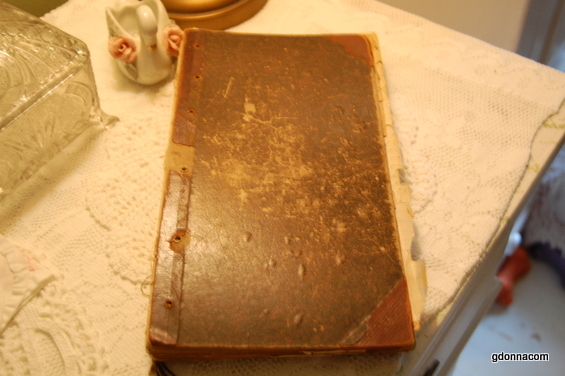
Sometimes we look to the past to find what makes sense. Grandma Donna
